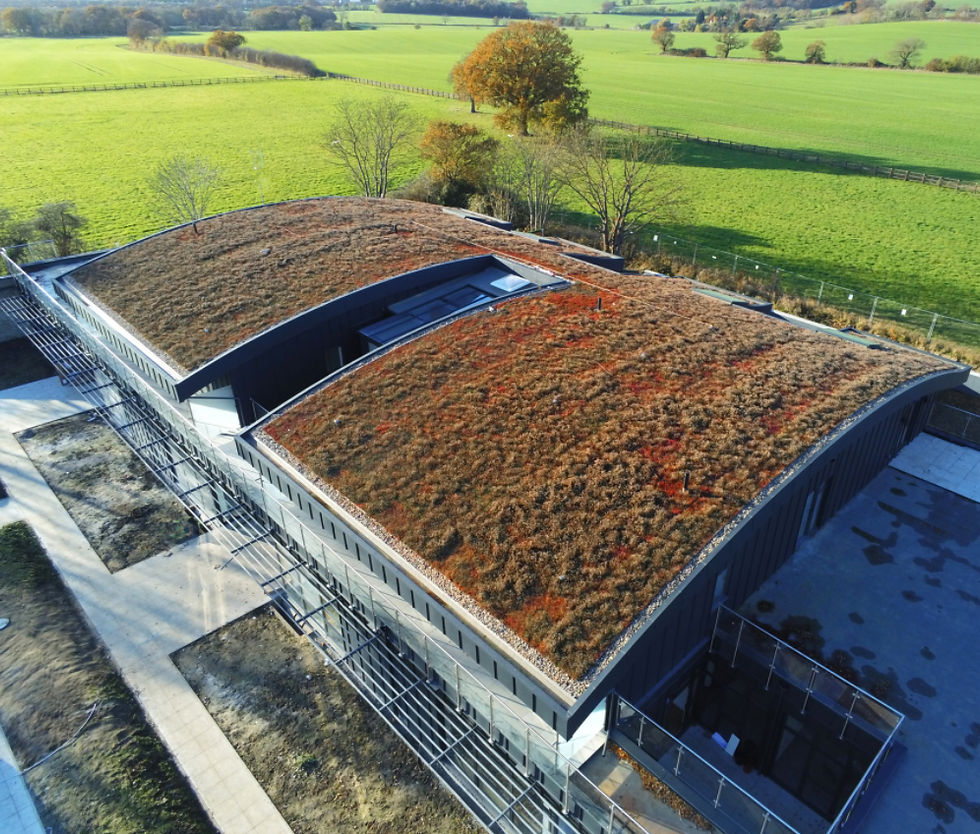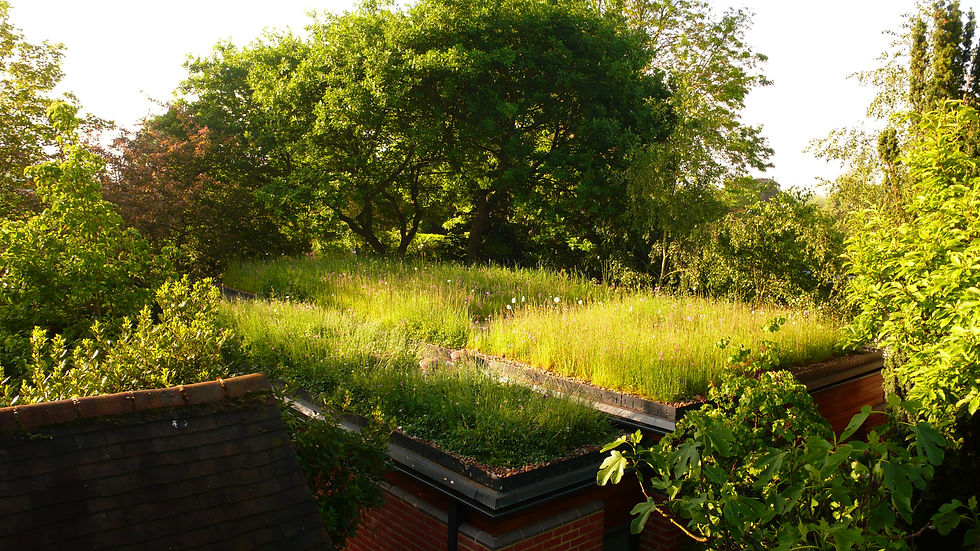A blueprint for sustainable roofing
- Specify & Build
- Aug 4
- 3 min read
Luis Ramos, head of newbuild and architecture at WestWood Liquid Technologies, explains the role of green and blue roofs in sustainable urban development.
As urban spaces continue to expand and climate pressures intensify, the role of roofing systems in shaping a more sustainable built environment has never been more significant. Architects, developers, and specifiers are increasingly being called upon to deliver solutions that go beyond merely providing shelter. Roofs must now help manage water, improve energy efficiency, and reduce emissions.
We know that green roofs have emerged as one of the most effective ways to combine aesthetics with sustainable functionality. But beyond creating visually appealing spaces and supporting biodiversity, planning authorities are also increasingly restricting rainwater discharge rates. Architects and developers are seeking more effective ways to meet sustainability targets while mitigating environmental impact.

Seeking smart solutions
Green roofs can extend the lifespan of roofing membranes by protecting them from UV-induced thermal stress while simultaneously reducing energy costs through their insulating properties. There is also synergy between green roofs and solar technology, as vegetation helps maintain lower temperatures, preventing efficiency losses of up to 20% in solar panels. The build-up of a green roof also plays a critical role in extending the lifespan of the roof itself, and the correct specification of the waterproofing membrane is vital.
Blue roof specification
Urban planners and developers are increasingly being challenged by stringent discharge restrictions imposed by planning authorities. With more frequent and intense rainfall events across the UK, cities are at growing risk of surface water flooding. This is where blue roofs come into their own. The growing adoption of blue roofs as an essential component of Sustainable Drainage Systems means rainwater can be managed at the source; reducing flood risk in urban environments and aligning with critical legislative requirements, including the Flood and Water Management Act 2010.
Robust waterproofing design
At the heart of every successful green or blue roof system lies durable and versatile waterproofing. For truly sustainable outcomes, the materials chosen must not only perform under demanding conditions, but also contribute to energy and carbon reduction goals. This is where PMMA (Polymethyl Methacrylate) liquid waterproofing systems stand out for green and blue roof applications.

PMMA solutions are cold-applied and fast-curing, offering seamless protection with minimal disruption on site. They outperform traditional bitumen-based systems in terms of flexibility, durability, and adaptability to complex detailing - making them ideal for the intricate designs often required by green and blue roof systems.
From an environmental perspective, PMMA coatings are hugely beneficial. Unlike conventional roofing membranes, which often rely on LPG during installation – releasing up to 3kg of CO₂ per kilogram burned – PMMA systems require no flame, reducing onsite emissions and improving safety.
In cases where a green roof cannot be specified and installed, the use of light-coloured PMMA finishes with high Solar Reflectance Index (SRI) values is an effective approach; as it contributes to cooler roof surfaces. This not only lowers building cooling costs but also helps mitigate the urban heat island effect, where built-up areas retain heat and exacerbate high summer temperatures.
As the construction sector adapts to increasingly rigorous environmental standards, the specification of roofing materials that deliver on performance, safety, and sustainability is no longer optional – it’s essential. Green and blue roofs, underpinned by innovative waterproofing systems like PMMA, are proving that smart design can solve multiple urban challenges at once.
























































.png)
